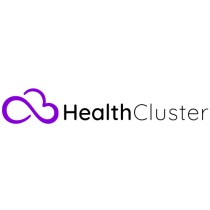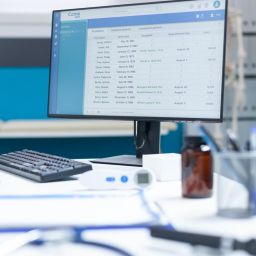
Why Simplicity, Speed, and Smart Insights Matter — Powered by HealthCluster
In the fast-paced environment of a hospital, every second counts. Admins are constantly making decisions — from managing bed capacity and staffing to responding to emergencies or tracking financial performance. But without real-time, accurate data at their fingertips, these decisions can be delayed, misinformed, or inefficient.
That’s why data dashboards have become a vital tool in modern healthcare management. And at Health Cluster, we’ve taken this to the next level — designing dashboards that aren’t just functional, but simplified, unified, and built for action.
Let’s break down how dashboards empower hospital admins to act fast — and why Health Cluster’s solutions are setting a new standard.
1. From Information Chaos to Clarity
Traditional hospital systems are filled with siloed data. Admins need to juggle multiple platforms to find lab updates, occupancy stats, billing records, and inventory alerts.
Health Cluster solves this by offering centralized dashboards that bring everything together — clinical, financial, operational, and patient data — all on one screen.
Key Advantage:
- No more switching tabs or requesting reports.
- Admins get real-time visibility into what’s happening across departments.
2. Real-Time Data for Real-Time Decisions
Whether it’s an unexpected surge in ER patients or a delay in lab results, hospital admins need to respond now, not later.
Health Cluster’s dashboards are live and dynamic — pulling in real-time feeds from EMRs, LIS, HIS, and other integrated tools.
What this enables:
- Monitoring emergency room traffic
- Managing ICU capacity instantly
- Tracking lab turnaround times
- Getting alerts on medicine stockouts or resource shortages
All of this helps administrators act quickly and confidently.
3. Simplicity That Saves Time
In critical environments, dashboards shouldn’t be complex. They should be intuitive, visual, and easy to navigate — even for non-technical staff.
Health Cluster’s design philosophy focuses on user-friendly interfaces:
- Visual charts and traffic-light indicators
- Drag-and-drop customization
- Filtered views by department, location, or shift
- Mobile-friendly access for quick decisions on the go
Bottom line: Less time figuring out how the dashboard works, more time making decisions.
4. Proactive Alerts and Smart Insights
Our dashboards don’t just display data — they analyze it. Health Cluster’s smart dashboards offer:
- Predictive trends (e.g., rising admission rates, supply usage)
- Risk alerts (e.g., potential bed shortages, staff gaps)
- Financial health indicators (e.g., billing delays, overdue claims)
The benefit: Admins are no longer reacting to problems — they’re staying ahead of them.
5. Custom Views for Different Roles
From C-level executives to operations managers, every admin needs different insights. Health Cluster’s dashboards are role-based — meaning each user sees what’s relevant to them.
- Finance managers track collections and claims
- Nursing supervisors monitor shift coverage and patient loads
- Procurement teams get inventory alerts and supplier updates
- Clinical leads track patient discharge rates and care bottlenecks
One platform. Multiple perspectives. Total visibility.
Final Thoughts
In today’s data-rich healthcare environment, information is only powerful when it’s clear, connected, and actionable. Health Cluster’s simplified, real-time dashboards are designed for exactly that — empowering hospital admins to make smarter decisions, faster.
If your hospital is still working with disconnected reports and reactive decision-making, it’s time to shift to a system that truly supports your team — and your patients.
With Health Cluster, all your data lives in one place. And that means your decisions do too.
















